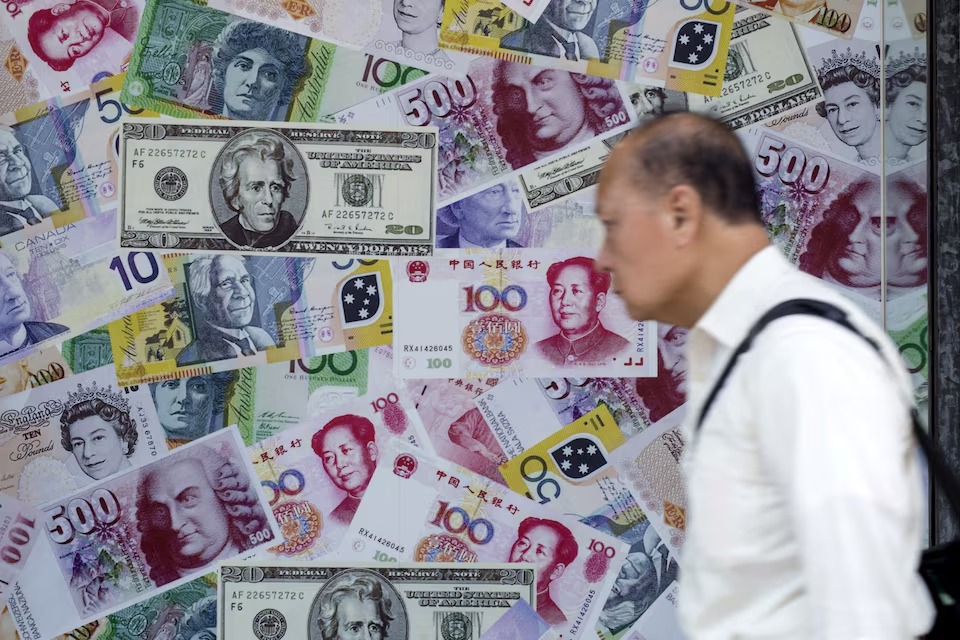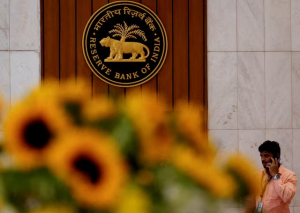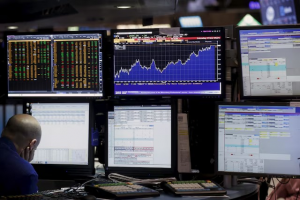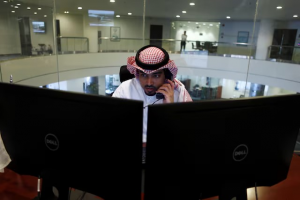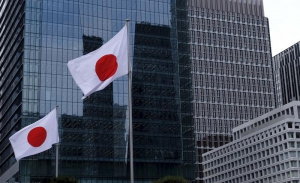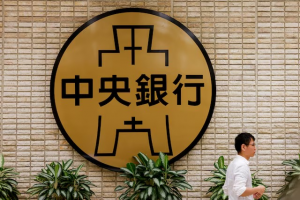A wave of dollar selling in Asia is an ominous sign for the greenback as the world's export powerhouse starts to question a decades-long trend of investing its big trade surpluses in U.S. assets. Ripples from Friday and Monday's record rally in the Taiwan dollar are now spreading outward, driving surges for currencies in Singapore , South Korea , Malaysia , China and Hong Kong . The moves sound a warning for the dollar because they suggest money is moving in to Asia at scale and that a key pillar of dollar support is wobbling. While Tuesday brought a measure of stability, following a stunning 10% two-day leap for Taiwan's currency, Hong Kong's dollar was testing the strong end of its peg and the Singapore dollar has soared close to its highest in more than a decade. "To me, it has a very sort of Asian-crisis-in-reverse feel to it," said Louis-Vincent Gave, founding partner of Gavekal Research, in a podcast, due to the speed of the currency moves. In 1997 and 1998 capital flight sank currencies from Thailand to Indonesia and South Korea and left the region determined to accumulate dollars in the aftermath. "Since the Asian crisis, Asian savings have not only been massive, but they've had this tendency to be redeployed into U.S. Treasuries. And now, all of a sudden, that trade no longer looks like the one-way slam dunk that it had been for so long," said Gavekal's Gave. Traders in Taiwan had reported difficulty executing trades, such was the one-sided wave of dollar selling, and speculated it had been at least tacitly endorsed by the central bank. Dealers said volumes were heavy in other Asian markets. At its heart, the break has been triggered by U.S. President Donald Trump's aggressive tariffs, analysts said, rattling investors' confidence in the dollar and upending the flow of trade dollars into U.S. assets in two places. First, exporters especially in China can expect fewer receipts as tariffs cut access to U.S. customers. Second, fear of a U.S. downturn casts a shadow over U.S. asset returns. "Trump's policies have weakened the market's confidence in the performance of U.S. dollar assets," said Gary Ng, senior economist at Natixis. Some are speculating on what markets have termed a "Mar-a-Lago agreement," he said, or a deal - named after Trump's gilded Florida resort - to weaken the dollar. Taiwan's Office of Trade Negotiations denied tariff talks in Washington last week had involved the topic of foreign exchange. TALK BECOMES REALITY Asia's biggest piles of dollars sit in China, Taiwan, South Korea and Singapore, which combined number in the trillions. In China alone, foreign currency deposits at banks - mostly dollars and mostly held by exporters - were $959.8 billion at the end March, the highest in nearly three years. On top of that are layered investments funded in these currencies, which have low borrowing costs by global standards and investments in U.S. stocks and bonds by pension and insurance funds, which have tended to keep foreign exchange hedges small due to the costs involved. There are signs the dollar view is shifting from all corners. Goldman Sachs said in a note on Tuesday that investor clients had recently flipped from short yuan positions, to long positions, or in other words, they are shorting the U.S. dollar expecting further weakness.
Related Posts
Markets
Most Gulf markets trade up, unfazed by rising regional tensions as US strikes Iran
Sunday 22nd June 2025Commnets

